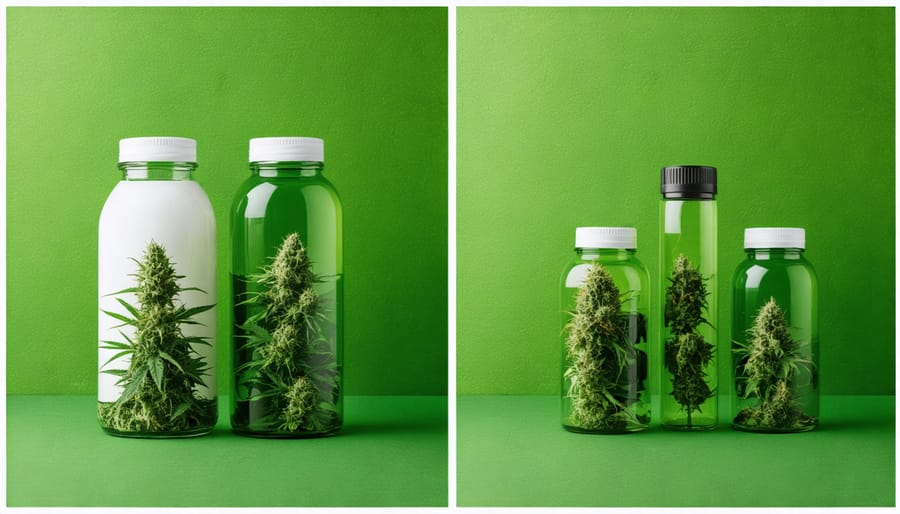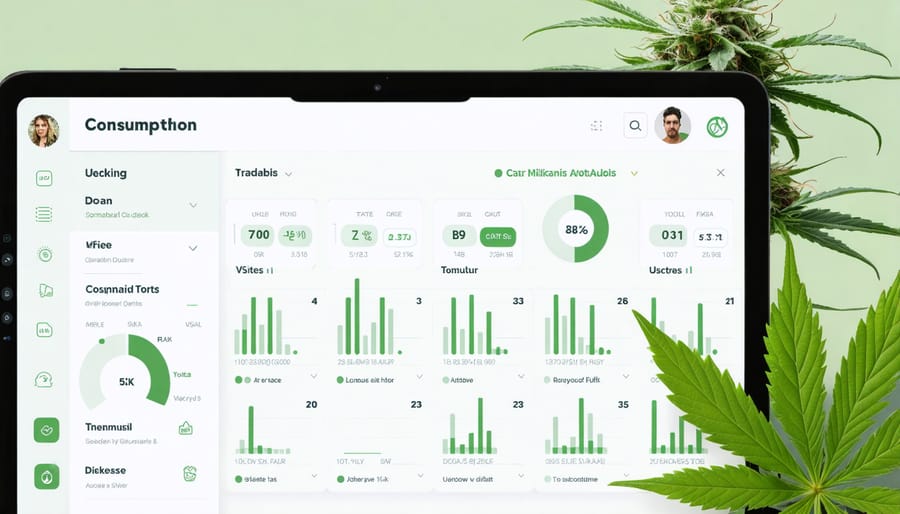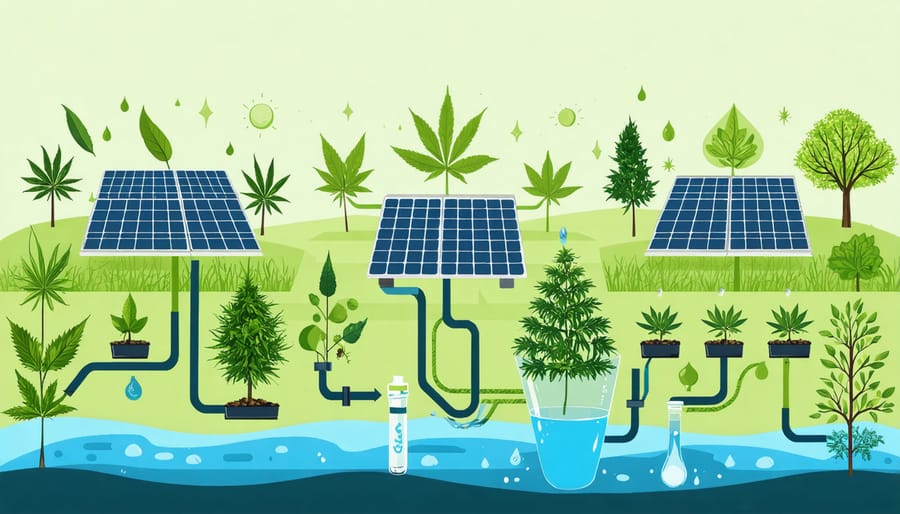Sustainable cannabis consumption demands a thoughtful balance between personal wellness and environmental responsibility. With the cannabis industry’s environmental footprint growing alongside legalization, conscious consumers from Budpop and beyond are reimagining what responsible use looks like. This shift extends beyond individual health to encompass cultivation practices, packaging choices, and community impact.
Mindful consumption patterns, coupled with support for environmentally conscious producers, create a framework for lasting positive change in the cannabis ecosystem. As climate awareness rises, the intersection of personal cannabis use and environmental stewardship has become increasingly relevant. From choosing organically grown products to minimizing waste through proper storage and recycling, every decision carries weight in shaping a more sustainable future for cannabis culture.
This evolving approach to cannabis use reflects a broader cultural movement toward conscious consumption, where the effects of our choices ripple beyond immediate gratification to impact both personal well-being and planetary health. By examining these interconnected aspects, we can develop practices that honor both the plant’s therapeutic potential and our environmental responsibilities.
What Makes Cannabis Use Sustainable?
Environmental Sustainability
Making environmentally conscious choices in cannabis consumption is crucial for minimizing our ecological footprint. The environmental impact of cannabis cultivation can be significant, but consumers can make sustainable choices that help reduce this impact. Consider purchasing from producers who use renewable energy, practice water conservation, and implement organic growing methods.
Opt for products with minimal or recyclable packaging, and look for brands that use hemp-based or biodegradable materials. When possible, choose locally grown cannabis to reduce transportation emissions. For consumption methods, vaporizing can be more energy-efficient than traditional smoking, as it requires less plant material for similar effects.
Home growers can contribute to sustainability by using LED lights, implementing water recycling systems, and choosing organic nutrients. For disposal, ensure spent cannabis materials are properly composted, and packaging is recycled according to local guidelines. Supporting dispensaries and brands that prioritize environmental responsibility sends a strong message to the industry and helps drive positive change toward more sustainable practices.
Consider joining community initiatives focused on cannabis sustainability or advocating for stricter environmental standards in the industry. Every conscious choice contributes to a more sustainable future for cannabis consumption.
Personal Health Sustainability
Maintaining a sustainable relationship with cannabis begins with understanding your personal limits and establishing mindful consumption patterns. Rather than following arbitrary guidelines, focus on developing self-awareness about how cannabis affects your daily life, productivity, and overall wellbeing.
Start by tracking your usage patterns and noting how different consumption methods and quantities impact your mood, energy levels, and ability to meet your responsibilities. Consider implementing regular tolerance breaks to reset your system and maintain the effectiveness of your cannabis use. Many experienced consumers find that scheduled breaks of 2-4 weeks every few months help maintain a balanced relationship with the plant.
Pay attention to your body’s signals and adjust your consumption accordingly. If you notice increased anxiety, sleep disturbances, or decreased motivation, these may be signs to reassess your usage patterns. Consider alternating between different strains and consumption methods to prevent building up tolerance to specific products.
Remember that sustainable cannabis use isn’t just about frequency—it’s about integrating cannabis into your life in a way that enhances rather than hinders your personal growth and daily activities. Set clear boundaries around when and how you consume, and stick to them.
Building Mindful Consumption Habits
Tracking Your Usage
Tracking your cannabis consumption is a key component of developing sustainable habits. Start by maintaining a simple digital or physical journal to log essential details like consumption method, quantity, time of use, and effects experienced. Many users find success with dedicated cannabis tracking apps, which offer features like dose tracking, mood monitoring, and consumption pattern analysis.
Consider documenting your primary reasons for use each time, whether it’s for relaxation, pain management, or social situations. This helps identify patterns and ensures your consumption aligns with your intended purposes. Set clear boundaries by establishing personal limits, such as specific times of day or maximum weekly amounts.
Pay attention to your tolerance levels and note any changes in how cannabis affects you over time. If you notice diminishing effects from the same dosage, it might indicate a need for a tolerance break. Remember to track both positive and negative experiences – this comprehensive view helps you optimize your consumption for maximum benefit while maintaining sustainable practices.
Keep your records private but accessible, and review them regularly to make informed decisions about your usage patterns and adjust accordingly.
Setting Healthy Boundaries
Establishing personal boundaries is crucial for maintaining a healthy relationship with cannabis. Start by setting clear responsible consumption guidelines that align with your lifestyle and goals. Consider implementing a schedule that designates specific days or times for consumption, helping you maintain balance and prevent overuse.
Create firm rules about contexts where you won’t consume, such as before work, while driving, or during important family events. Many successful consumers follow the “evening only” rule or limit usage to weekends, ensuring cannabis enhances rather than interferes with daily responsibilities.
Track your consumption patterns using a journal or app, noting how different amounts affect your mood, productivity, and overall well-being. This self-awareness helps you identify your personal sweet spot and recognize when usage patterns need adjustment.
Set financial boundaries by establishing a monthly cannabis budget. This not only helps maintain economic sustainability but also naturally limits consumption to reasonable levels. Remember that these boundaries aren’t about restriction – they’re about creating a framework for enjoyable, mindful consumption that supports your long-term well-being and goals.

Integrating Tolerance Breaks
Integrating regular breaks into your cannabis consumption routine is essential for maintaining a sustainable relationship with the plant. The benefits of tolerance breaks extend beyond just reducing tolerance levels – they help you maintain mental clarity, save money, and develop a more mindful approach to consumption.
To implement effective tolerance breaks, start with short intervals of 48-72 hours and gradually extend them to 1-2 weeks as you become more comfortable. Many users find success with a cyclical approach, such as taking a break every six weeks or scheduling longer breaks quarterly.
During your break, focus on activities that support your well-being: exercise, meditation, or pursuing creative interests. Stay hydrated and maintain a regular sleep schedule to help your body adjust. Some users report mild irritability or sleep changes during the first few days – this is normal and typically subsides quickly.
Keep a journal to track your experiences before, during, and after breaks. This helps you identify patterns and adjust your consumption habits accordingly. Remember, sustainable cannabis use isn’t about complete abstinence but rather finding a balanced approach that works for your lifestyle while maintaining the plant’s effectiveness and your overall wellness.
Making Sustainable Product Choices

Quality Over Quantity
When it comes to sustainable cannabis consumption, the quality of your products plays a crucial role in both personal wellness and environmental impact. Instead of focusing on quantity, invest in high-quality cannabis products that offer better effects and typically require less material for desired results.
Start by researching your products’ cultivation methods. Look for cannabis grown using organic practices, free from harmful pesticides and synthetic fertilizers. Quality-focused cultivators often employ sustainable growing techniques, resulting in cleaner, more potent products that provide better value for your money.
Consider third-party lab testing results when available. These reports verify cannabinoid content and ensure products are free from contaminants like heavy metals, molds, and residual solvents. Higher quality products might cost more initially, but they often deliver superior effects, meaning you’ll likely consume less over time.
Pay attention to packaging and preservation. Quality products typically come in appropriate storage containers that maintain freshness and potency. This means your cannabis stays effective longer, reducing waste and the need for frequent purchases.
When possible, build relationships with local dispensaries and cultivators who prioritize quality control. They can provide valuable insights about their products’ origins and processing methods. Remember, supporting businesses that maintain high standards helps drive the industry toward more sustainable practices while ensuring you get the most value from your cannabis consumption.
Eco-Friendly Options
As the cannabis industry evolves, implementing sustainable cannabis practices has become increasingly crucial for both consumers and producers. One of the most significant steps forward is the adoption of eco-friendly packaging solutions. Many progressive dispensaries now offer products in recyclable or biodegradable containers, moving away from traditional plastic packaging. Hemp-based packaging, which naturally biodegrades and requires fewer resources to produce, is gaining traction as a viable alternative.
In terms of cultivation, sustainable growing methods are revolutionizing the industry. LED lighting systems have replaced energy-intensive high-pressure sodium lamps, reducing electricity consumption by up to 40%. Water conservation techniques, such as drip irrigation and water recycling systems, help minimize waste while maintaining optimal growing conditions. Some producers have even implemented solar panels and rainwater harvesting systems to further reduce their environmental impact.
Soil health is another crucial aspect of sustainable cultivation. Many growers are switching to organic farming methods, using natural pest control solutions and companion planting techniques. Living soil systems, which maintain beneficial microorganisms, not only produce healthier plants but also reduce the need for synthetic fertilizers and pesticides.
For home growers, these principles can be applied on a smaller scale through practices like composting, using renewable energy sources, and selecting organic nutrients. By making conscious choices about how we grow and consume cannabis, we can help ensure the industry’s long-term sustainability.
Social and Economic Sustainability

Supporting Ethical Producers
Supporting ethical cannabis producers goes beyond just choosing quality products – it’s about backing businesses that prioritize social responsibility and sustainable practices. When selecting your cannabis supplier, look for companies that demonstrate transparency in their growing methods and labor practices. Many ethical producers proudly share information about their organic cultivation techniques, fair wage policies, and community involvement.
Consider supporting small, local dispensaries and farms that contribute to their communities through job creation and economic development. These businesses often maintain stronger connections with their customers and have more direct oversight of their production processes. Look for operations that prioritize diversity in hiring and leadership, as well as those that actively work to address the historical inequities of cannabis criminalization.
Certification programs and industry standards can help identify responsible producers. While federal limitations mean there’s no universal organic certification for cannabis, many companies follow Clean Green Certification or similar programs that verify sustainable practices. Research whether companies engage in water conservation, use renewable energy, or implement waste reduction programs.
Pay attention to packaging practices as well. Ethical producers often use recyclable or biodegradable materials and minimize excessive packaging. Some companies even offer container return programs or packaging made from hemp-based materials, demonstrating their commitment to full-circle sustainability.
By choosing to support these responsible businesses, you’re not just getting quality cannabis – you’re helping shape an industry that prioritizes both environmental stewardship and social justice.
Budget-Conscious Consumption
Maintaining a financially sustainable cannabis consumption habit requires thoughtful planning and smart purchasing decisions. Start by establishing a realistic monthly budget for cannabis expenses, treating it like any other recreational expense in your lifestyle. Consider tracking your spending through a dedicated app or spreadsheet to maintain accountability.
Bulk purchasing can offer significant savings, but be mindful of storage conditions to maintain product quality. Many dispensaries offer loyalty programs and daily deals – taking advantage of these promotions can substantially reduce costs over time. Consider visiting dispensaries during off-peak hours when they’re more likely to offer discounts on specific products.
Growing your own cannabis, where legally permitted, represents one of the most cost-effective long-term solutions. While there’s an initial investment in equipment and materials, the return on investment typically occurs within the first or second harvest.
For social consumers, consider organizing consumption circles with trusted friends, where costs and products can be shared responsibly. This approach not only reduces individual expenses but also promotes community and mindful consumption.
Don’t overlook the importance of proper storage to prevent waste. Invest in quality storage containers and humidity control packs to extend the life of your products. Remember that the most expensive cannabis isn’t necessarily the best – research strains and products that offer the specific effects you’re seeking rather than focusing solely on THC content or brand names.
As we’ve explored throughout this article, sustainable cannabis use extends far beyond just personal consumption habits. It encompasses a holistic approach that considers our health, community, and environmental impact. By adopting mindful consumption practices, choosing environmentally conscious products, and supporting ethical producers, we can help shape a more sustainable future for cannabis culture.
Remember that responsible consumption starts with understanding your own limits and needs. Whether you’re an occasional user or a regular consumer, maintaining awareness of your usage patterns and their effects on your well-being is crucial. This self-awareness, combined with informed choices about product selection and consumption methods, creates a foundation for long-term sustainable use.
The cannabis industry is at a pivotal point where consumer choices can significantly influence its direction. By demanding transparency, supporting eco-friendly practices, and advocating for responsible policies, we collectively contribute to a more sustainable cannabis ecosystem. This includes considering the environmental footprint of our consumption, from cultivation methods to packaging waste.
As we move forward, let’s commit to being conscious consumers who prioritize both personal and planetary health. The future of sustainable cannabis use lies in our ability to balance enjoyment with responsibility, ensuring that this remarkable plant continues to benefit both individuals and communities while minimizing its environmental impact. Together, we can cultivate a culture of mindful consumption that supports both human wellness and ecological sustainability.
